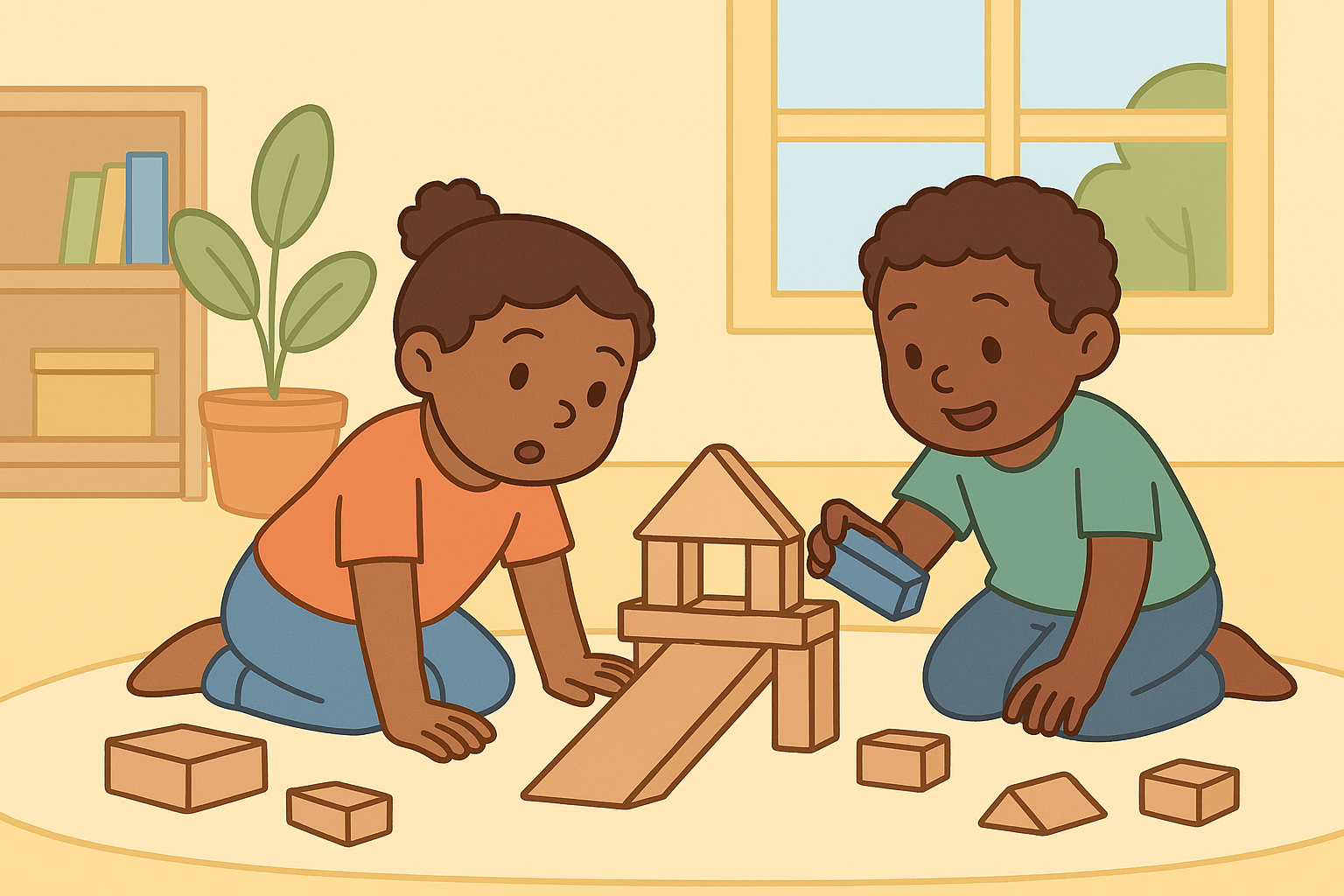Creative Problem Solving Through Play
Creative Problem Solving Through Play
When your child builds a tower that keeps falling, figures out how to fit a toy car through a tunnel, or invents a new game on the spot — they’re not just having fun. They’re developing one of the most important life skills of all: creative problem solving.
Through play, children learn to think critically, adapt, and keep trying — exactly the mindset that fuels lifelong learning and resilience.
Let’s explore how to nurture problem-solving through play that challenges, engages, and inspires.
Why Play Builds Better Thinkers
Play naturally invites experimentation and discovery. Unlike adult-driven tasks, it allows kids to test ideas freely, fail safely, and try again — all in a joyful, low-pressure environment.
Creative problem solving through play helps children:
Strengthen focus and persistence.
Develop reasoning and cause-effect thinking.
Learn flexibility and adaptation.
Build confidence in tackling challenges.
💡 Fuzzigram tip: When you resist the urge to “fix” things for your child, you give them space to figure it out themselves — the real magic moment.
See When Play Gets Competitive: Teaching Fairness and Resilience.
Step 1: Create Open-Ended Challenges
Set up play activities that have many possible outcomes, not one right answer.
Try:
“How can we build a bridge that holds this toy?”
“Can you make a tower taller than your cup?”
“What’s another way to roll the ball across the room?”
💡 Fuzzigram tip: Frame challenges as adventures, not tests — it keeps curiosity alive.
Step 2: Add Gentle Friction
Let kids encounter small obstacles — a missing block, a limited tool, or a timer. Struggle sparks creativity.
💡 Fuzzigram tip: Instead of offering solutions, ask questions like:
“What else could we try?”
“How could we make it work another way?”
Step 3: Encourage “What If?” Thinking
Play is the perfect setting for imaginative problem-solving.
Ask:
“What if your blocks were made of ice?”
“What if the toy car could fly?”
“What if you had to build a house for a tiny mouse?”
💡 Fuzzigram tip: These silly prompts teach flexible thinking — the foundation of creativity and innovation.
Step 4: Mix Art and Engineering
Combine creative play with simple design challenges.
Try:
Building cardboard ramps for marbles.
Making a “rescue device” for a stuffed animal.
Designing a paper bridge that holds coins.
💡 Fuzzigram tip: When kids combine creativity with logic, they start thinking like problem-solvers and inventors.
Step 5: Play Cooperative Problem Games
Games that require teamwork help children practice negotiation, patience, and listening — all vital problem-solving skills.
Ideas:
Team obstacle course (“We can only step on pillows!”).
Shared puzzles.
Building challenges in pairs.
💡 Fuzzigram tip: When kids learn to share control, they also learn to collaborate effectively.
Step 6: Use Storytelling as a Problem-Solving Tool
Encourage your child to invent stories with obstacles and resolutions.
Example:
“The dragon lost his treasure — how will he find it?”
“The robot’s battery ran out — what can we do?”
💡 Fuzzigram tip: Storytelling teaches cause and effect while helping kids emotionally process challenges.
See The Magic of Puppet Play: How Storytelling Builds Imagination.
Step 7: Build Resilience Through “Do-Overs”
Normalize failure as part of the fun. If something doesn’t work, laugh together and say, “Let’s try again!”
💡 Fuzzigram tip: Resilience grows in repetition — every failed tower or wobbly design builds persistence.
Step 8: Connect Play to Real-World Problems
Ask your child to invent creative solutions to everyday scenarios:
“How could we make dinner cleanup more fun?”
“What could help people carry groceries more easily?”
💡 Fuzzigram tip: These questions develop design thinking and social awareness.
Step 9: Reflect After Play
Ask reflection questions to reinforce thinking:
“What worked?”
“What surprised you?”
“What will you try next time?”
💡 Fuzzigram tip: Reflection turns play into strategy — it helps kids link creativity with logic.
Step 10: Celebrate Creative Thinking
Recognize clever ideas, not just finished projects. Say things like:
“That was a smart idea to fix it that way!”
“I like how you kept trying different ways.”
💡 Fuzzigram tip: When you praise curiosity and persistence, kids internalize confidence, not perfectionism.
Every time your child faces a problem in play — and solves it — they’re developing creativity, confidence, and critical thinking. The ability to stay calm, flexible, and curious in the face of a challenge is one of life’s greatest strengths.
So next time the block tower tumbles, don’t rush to fix it. Smile and say,
“I wonder what you’ll try next.”
That’s where real learning begins.
This content is for educational purposes and is not a substitute for professional medical or psychological advice.
Popular Parenting Articles


